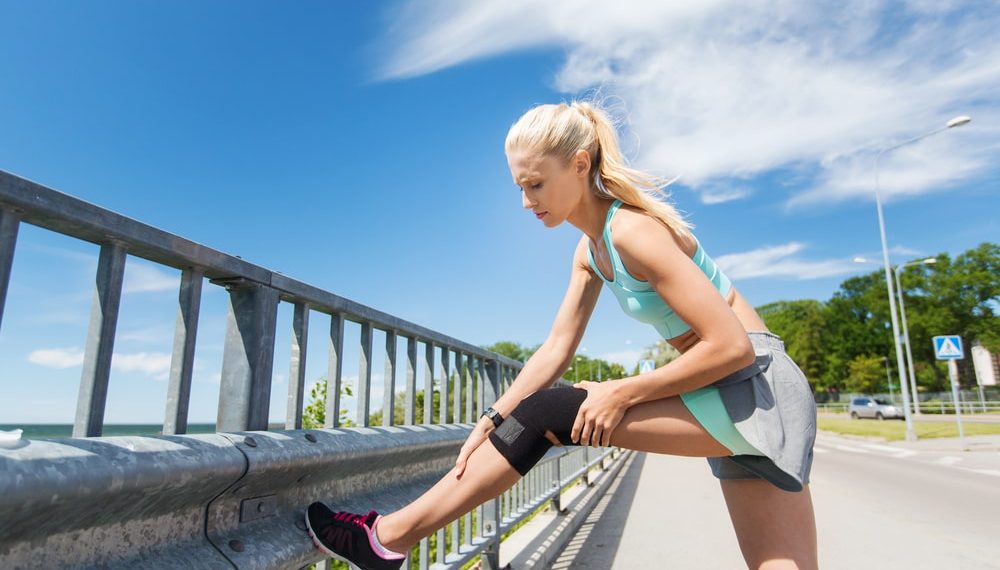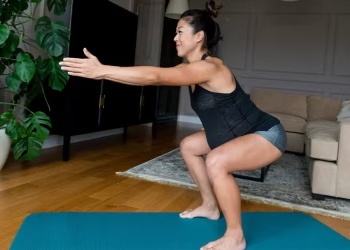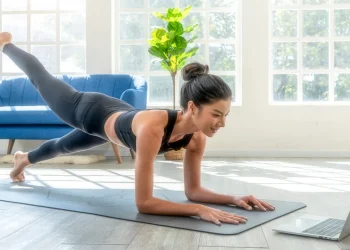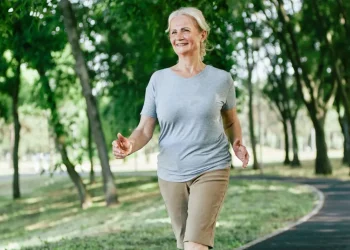Walking is often called the perfect exercise, and for good reason. This low-impact activity offers remarkable benefits for joint health, making it an ideal choice for people of all ages and fitness levels. Whether you’re looking to prevent joint problems, manage existing conditions, or simply maintain healthy joints as you age, understanding how to walk properly can make a significant difference in your long-term mobility and quality of life.
The Science Behind Walking and Joint Health
Contrary to what many people believe, regular movement doesn’t wear out your joints—in fact, appropriate physical activity like walking actually helps maintain and improve joint health. Joints are designed to move, and walking provides the perfect balance of motion and gentle stress that keeps them functioning optimally.
When you walk, your joints experience a phenomenon known as “dynamic loading.” This rhythmic compression and decompression serves multiple crucial purposes. First, it helps pump nutrient-rich synovial fluid throughout the joint space. Unlike most tissues in the body, cartilage doesn’t have its own blood supply. Instead, it relies on movement to push fluid in and out, delivering essential nutrients and removing waste products. Without regular movement, cartilage can actually deteriorate faster.
Walking also stimulates the production of synovial fluid itself, which acts as a lubricant for your joints. Many people with arthritis notice that their joints feel stiffer after sitting for extended periods but improve once they start moving. This is because movement increases fluid production and circulation, reducing friction and discomfort.
Additionally, walking strengthens the muscles surrounding your joints, particularly in the hips, knees, and ankles. These muscles act as shock absorbers and stabilizers, reducing the direct stress placed on joint structures. Stronger muscles mean better joint protection during all your daily activities, not just during your walks.
Research has consistently shown that regular walking can reduce joint pain and stiffness in people with osteoarthritis, the most common form of joint disease. A landmark study published in the Arthritis Care & Research journal found that walking approximately 6,000 steps per day was associated with better physical function and less disability in adults with or at risk of knee osteoarthritis.
Proper Walking Technique for Joint Protection
While walking is generally safe, using proper technique maximizes its benefits while minimizing the risk of joint stress or injury. Here’s how to walk in a way that protects and strengthens your joints:
Posture and Alignment
Begin by focusing on your posture. Stand tall with your head up, eyes looking forward rather than down at the ground. Your chin should be parallel to the ground, and your ears should align over your shoulders. Many people walk with their heads jutting forward, which creates a chain reaction of poor alignment down through the spine and into the lower body joints.
Keep your shoulders relaxed and pulled slightly back and down, away from your ears. Imagine a string pulling you up from the crown of your head, lengthening your spine. Your core muscles should be gently engaged to support your lower back—think of drawing your navel slightly toward your spine without holding your breath.
Foot Strike and Gait Pattern
Your foot strike—how your foot contacts the ground—significantly impacts joint stress. Aim for a heel-to-toe rolling motion. Your heel should strike the ground first, slightly in front of your body, then roll smoothly through the middle of your foot to push off with your toes. Avoid landing flat-footed or striking too hard with your heel, as this sends jarring impact forces up through your ankle, knee, and hip.
Keep your steps relatively short and natural. Overstriding—reaching too far forward with each step—increases impact forces on your joints, particularly the knees. Your feet should land approximately under your center of gravity rather than far in front of you.
Arm Movement
Your arms play an important role in efficient, joint-friendly walking. Bend your elbows at roughly 90 degrees and swing your arms naturally in opposition to your legs—right arm forward as left leg steps forward. This coordinated movement helps with balance and reduces rotational stress on your spine and hips. Keep your hands relaxed, not clenched, and your arm swing should come from the shoulder, not excessive elbow movement.
Cadence and Speed
Walk at a comfortable pace that allows you to maintain good form. You should be able to carry on a conversation without gasping for breath. For joint health, consistency matters more than speed. A moderate pace of roughly 100 steps per minute is often ideal for beginners or those with joint concerns, though you can gradually increase as your fitness improves.
Choosing the Right Walking Environment and Equipment
The surfaces you walk on and the shoes you wear significantly affect joint stress. Whenever possible, choose softer surfaces like grass, dirt trails, or rubberized tracks over concrete. These surfaces provide more shock absorption and reduce impact forces. However, avoid uneven terrain if you have balance issues or significant joint instability, as this increases the risk of twisting injuries.
Proper footwear is perhaps the most important equipment investment for joint health. Look for shoes with adequate cushioning in the heel and forefoot, good arch support, and a slightly rounded or beveled heel that encourages the natural heel-to-toe roll. The shoe should be flexible at the ball of the foot but provide stability through the midfoot and heel. Replace walking shoes every 300-500 miles, as cushioning breaks down over time even if the shoes still look fine.
If you have flat feet, high arches, or other structural issues, consider consulting with a podiatrist about custom orthotics. These can improve alignment throughout your lower body and reduce joint stress.
Walking Modifications for Joint Issues
If you’re dealing with arthritis, past injuries, or other joint problems, you can still benefit tremendously from walking with some thoughtful modifications:
For Knee Pain
Start with shorter distances and gradually build up. Walking on flat surfaces is easier on the knees than hills, especially downhill, which increases compression forces. Consider using trekking poles or walking sticks, which redistribute some of your body weight to your upper body and reduce knee loading by up to 25 percent.
If you experience swelling after walking, you may be doing too much too soon. Apply ice for 15-20 minutes afterward and consider reducing your distance or frequency temporarily. Strengthening the quadriceps muscles through simple exercises like straight leg raises can significantly reduce knee pain during walking.
For Hip Arthritis
Focus on maintaining a normal gait pattern rather than limping, which can create compensatory problems in other joints. Shorter, more frequent walks often work better than one long session. Walking in a pool (aquatic exercise) provides excellent cardiovascular benefits while the water’s buoyancy reduces joint loading by up to 90 percent.
For Ankle or Foot Problems
Choose very smooth, level surfaces and prioritize proper footwear even more strictly. Ankle braces or supports can provide stability if you have weakness or chronic instability. Start with very short walks and increase gradually. Consider alternating walking with other low-impact activities like cycling to give your ankles variety in movement patterns.
For Multiple Joint Issues
Breaking up your walking into several shorter sessions throughout the day can be just as beneficial as one longer walk, while reducing fatigue and joint stress. For example, three 10-minute walks spread across your day provide similar cardiovascular benefits to one 30-minute session but may be more manageable for your joints.
Creating a Sustainable Walking Program
Starting and maintaining a walking routine for joint health requires a thoughtful approach:
Begin conservatively, especially if you’re new to regular exercise or dealing with joint problems. Even five to ten minutes of walking provides benefits. Add no more than 10 percent to your distance or duration each week to allow your joints, muscles, and connective tissues to adapt.
Warm up before walking with gentle range-of-motion exercises for your ankles, knees, and hips. Simple movements like ankle circles, knee lifts, and hip circles prepare your joints for activity. After walking, gentle stretching while your muscles are warm can maintain flexibility and reduce stiffness.
Listen to your body and distinguish between normal muscle fatigue and joint pain. Some mild muscle soreness a day after walking is normal when you’re building up your routine. However, sharp pain, significant swelling, or discomfort that persists for more than a couple of hours after walking suggests you need to reduce intensity or consult a healthcare provider.
Consistency matters more than intensity for joint health. Regular moderate walking provides better long-term benefits than sporadic intense exercise. Aim for most days of the week, understanding that rest days allow your body to recover and adapt.
Conclusion
Walking represents one of the most accessible and effective strategies for maintaining and improving joint health throughout your life. By understanding the mechanisms through which walking benefits your joints, using proper technique, choosing appropriate equipment and surfaces, and making sensible modifications when needed, you can harness this simple activity to keep your joints healthy, mobile, and pain-free for years to come. Remember that every step counts toward better joint health, and it’s never too late to start. Whether you’re preventing future problems or managing existing conditions, walking offers a path toward improved mobility, reduced pain, and enhanced quality of life.
- what is tai chi walking for joint health
- walking for arthritis relief
- low-impact exercise for joints
- joint health benefits of tai chi walking
- joint-friendly exercise for seniors
- gentle joint exercises for elderly
- mobility and joint flexibility
- flexibility for joint health
- proper posture for joint protection
- gentle practices for joint care






